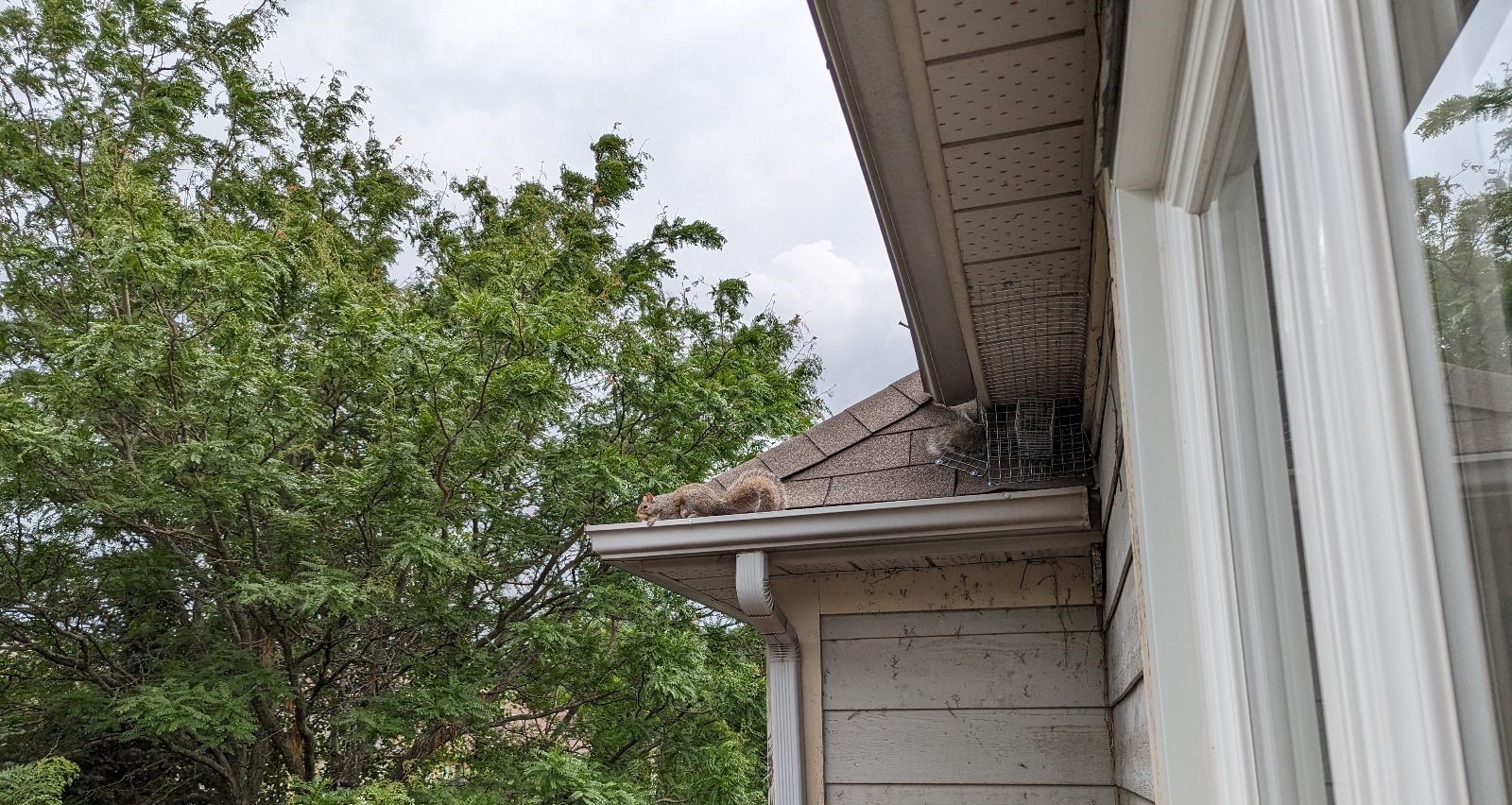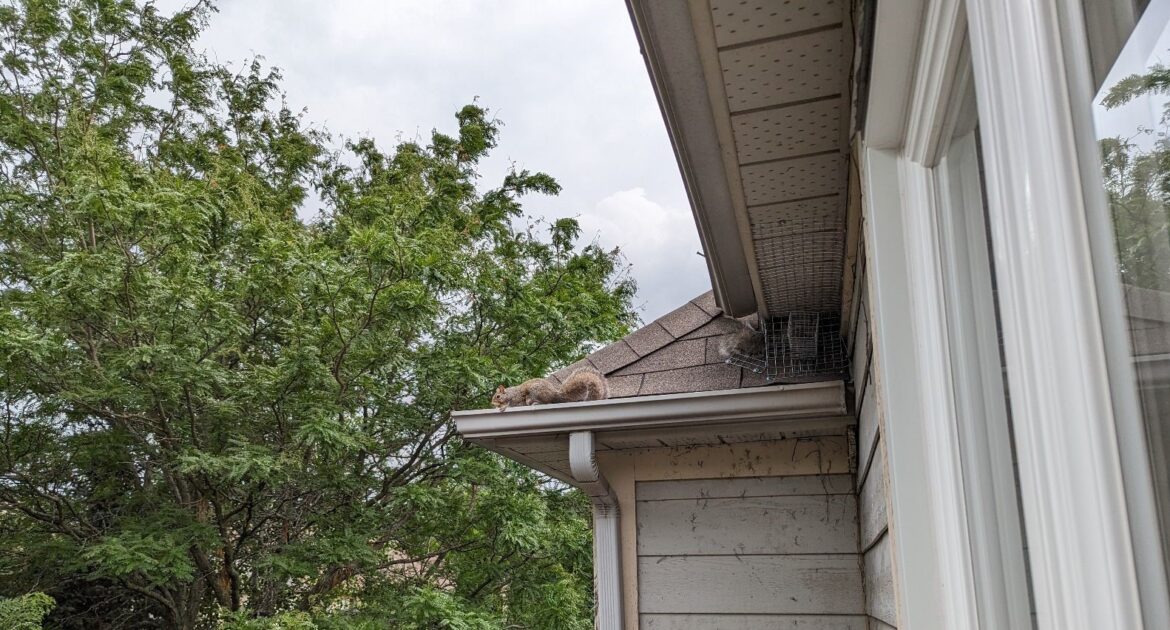Staring up at the tree limbs, you might wonder if those agile creatures darting from branch to branch really see you. The answer is yes, squirrels do have great eyesight! These nimble animals you often spot in your backyard rely heavily on their vision to survive. And when it comes to navigating their world, squirrels are quite the expert viewers. Understanding how squirrels see can help homeowners like you better manage and peacefully coexist with our wild friends.
But don’t worry—our mission isn’t just about controlling or getting rid of wildlife; it’s about understanding them, especially focusing on squirrels. Learning more about their incredible eyesight will amaze you and could be the key to better cohabitating with these intelligent animals. At Skedaddle Humane Wildlife Control, we’ve learned a lot from observing these delightful tree-dwellers, so we’re excited to share what we know.
Let’s uncover the facts about squirrels use their vision to thrive and how their unique eyesight actually helps them get around safely and find dinner. Plus, if you need any help with wildlife removal in Victoria or if these squirrels have decided to become your uninvited guests, we’re here to help with humane solutions.
How Their Eyesight Helps Them Thrive
Squirrels may seem like small, simple animals, but their eyesight is surprisingly advanced. Their vision helps them navigate tricky environments, find food, and stay safe from predators in the wild. Here’s how their unique visual abilities work to their advantage.
Wide Field of Vision
Squirrels’ eyes are located on the sides of their heads, giving them an impressive field of view. This placement allows them to see a wide area without having to move their heads. It’s a critical feature that helps them quickly detect predators like hawks or cats.
By keeping their surroundings in constant view, squirrels can react to threats almost instantly, whether they’re on the ground or darting between trees. Their wide vision is one of their key survival tools.
Sharp Distance Vision
Squirrels are known for their sharp long-distance vision. This allows them to spot food sources, like nuts and seeds, from high up in trees or far away on the ground. It also helps them identify predators or other dangers well before they get too close.
However, their vision isn’t as effective for objects that are very close. For tasks like cracking nuts or building nests, they rely more on their sense of touch than their eyesight.
Adaptation for Movement
One of the most impressive aspects of a squirrel’s eyesight is its ability to detect movement. Squirrels are particularly skilled at spotting even the slightest motion around them. This helps them react quickly to predators or other animals that might threaten them. Whether it’s the flutter of a bird’s wings or the approach of a cat, their eyes are tuned to pick up on anything that moves. This adaptation is key to their quick reflexes and sharp instincts.
By understanding how squirrels rely on their advanced vision, homeowners can better appreciate their resilience. It’s also a reminder of why it’s important to address wildlife challenges in humane and respectful ways.
Colour Vision in Squirrels
Our furry friends might not see the full spectrum of colours as humans do, but they still manage to spot differences in many shades. They’re not stuck in a world of black and white like some animals. What they lack in vividness, they make up for with functionality.
Squirrels are particularly good at distinguishing between greens and reds. This specialized vision helps them locate food like berries and nuts amidst the lush green of leaves. It’s a useful trait for any animal foraging in dense woods where fruits are hidden within layers of foliage.
If you’ve got a garden full of delicious veggies and fruit, this aspect of squirrel behaviour is important to note. Luckily, we can help with wildlife removal in Victoria and provide humane deterrent solutions to protect your backyard treasures.
Night Vision in Squirrels
When it comes to seeing in the dark, squirrels aren’t at the top of the class. These animals are diurnal, which means they are active during daylight hours and catch up on some rest when the sun goes down. Their eyes are perfectly designed for daytime adventures rather than nighttime escapades.
Unlike owls and other night watchmen of nature, squirrels don’t have the adaptations required for seeing in the pitch black. When dusk falls, their world dims, and their sharp vision becomes less effective than it is during the day.
If you hear a rustle in the attic at night, it just might not be a squirrel. Paying attention to when and how you notice wildlife in your home helps in efficient animal removal and deciding the right kind of help you might need from our team in Victoria.
Squirrel Vision and Wildlife Solutions
Squirrels truly have incredible eyesight, especially when it comes to spotting things from far away and noticing movement. This sharp vision helps them find food and stay safe from predators.
But if these little acrobats are causing trouble around your home, Skedaddle Humane Wildlife Control in Victoria is here to help. We specialize in humane and effective solutions to manage wildlife issues.
For anyone dealing with squirrels in their attic or garden, remember—Skedaddle has the know-how to handle it. Our team offers friendly and expert advice to make sure both your home and local wildlife can thrive together peacefully. If you’re interested in learning more or need help, please reach out to us. Contact us to request a quote and discover how to get rid of wildlife. We can assist you with your needs.




